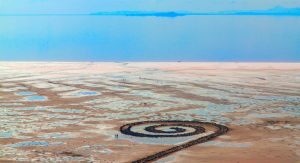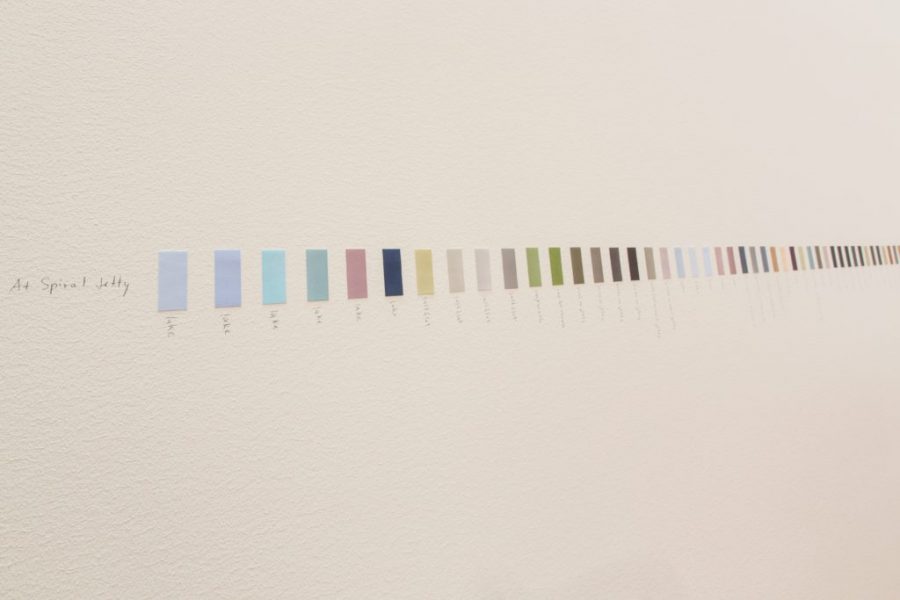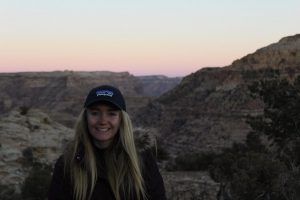The Utah Museum of Fine Arts (UMFA), located at the University of Utah, reopened a few weeks ago after having been closed for 19 months. The remodel of the museum came with an exciting feature — a new usage for the space called the “Great Hall.”
American artist, Spencer Finch, was invited by the UMFA to work in the Great Hall, where he created the “Great Salt Lake and the Vicinity,” a descriptive pantone color chip piece.
Throughout the hall, Finch’s pantone chips line the walls, color matching to what he saw on a three-day journey around the Great Salt Lake. Traveling by foot, boat, and motor vehicle, he matched pantone chips with the landscape he saw. Searching to consider landscapes in new ways, Finch used colors not usually associated with the Great Salt Lake, such as deep pinks and bright blues, to describe things like algae and the reflections he saw on the lake.
In an interview with senior curator Whitney Tassie, Finch said, “The more I learned about the lake, the more I realized that a lot of people who live right near the lake never go to the lake. No one’s interested in it. They think it’s polluted; they think it’s smelly; they think there are lots of flies; they think it’s ugly; it’s not a natural wonder. But it’s pretty spectacular, I mean, it’s pretty amazing.”
Finch’s “site-specific installation” has already attracted many visitors, including myself, and is a contemporary art piece I recommend seeing.
In addition to “Great Salt Lake and the Vicinity,” UMFA collaborates with the Dia Art Foundation and the Great Salt Lake Institute at Westminister College to maintain two other awesome land art pieces: Robert Smithson’s Spiral Jetty and Nancy Holt’s Sun Tunnels.

In the museum’s permanent collection, you can see an original photograph from Nancy Holt of her Sun Tunnels. The photo features 24 photos taken every half hour for 12 hours, from sunrise to sundown, through the angle of one of the tunnels. You can see the gradation of light change as the sun moves over the tunnels, while you are still looking at the same view. Holt was inspired to create these tunnels because she “wanted to bring the vast space of the desert back to human scale,” as cited in “Nancy Holt: Sightlines.”
Since its reopening, UMFA has become a kind of “jumping off point” for art and interactive learning. Inside the museum you can find three different conversation areas named Trailhead, Basecamp, and Lookout. In these conservation areas, you can find informational pamphlets, biographies about local artists, and activities for kids to do.
Admission into the museum is free for U students and faculty, and thanks to its cafe, conversation areas, and quiet environment, it can make for a perfect study place, as well as a perfect date idea during its late open hours of 9 p.m. on Wednesdays.
If the museum atmosphere isn’t your scene, you can take it a little further to create your own art adventure. In Spencer Finch’s piece, his art started as soon as he left, and the same can go for you. Plan a road trip out to see those two amazing Utah land art pieces, or even camp out in the desert at the sun tunnels alone, the important thing is just to go and get yourself out there.
Before you go, make sure to check out a Spiral Jetty Backpack from UMFA, which includes a microscope, binoculars, thermometer, compass, maps, and a sketchbook, to make your adventure into Utah’s salty desert an even more interesting trip. These backpacks can be found at the front desk of the museum or at the Salt Lake City Public Library’s Children’s desk downtown.



